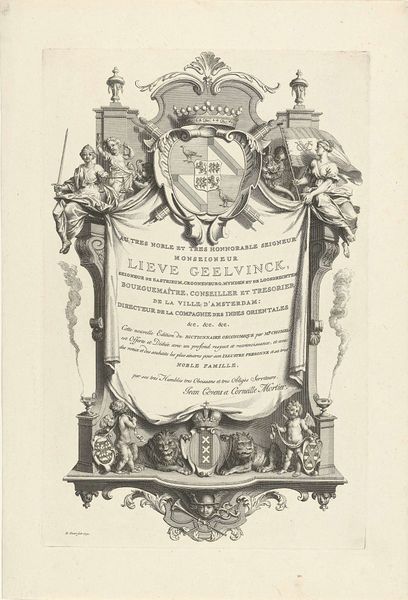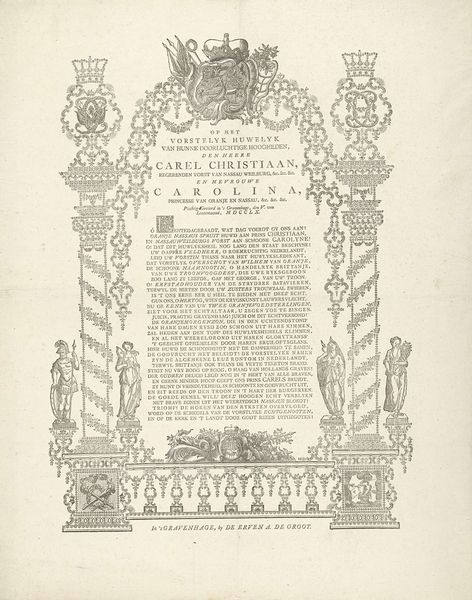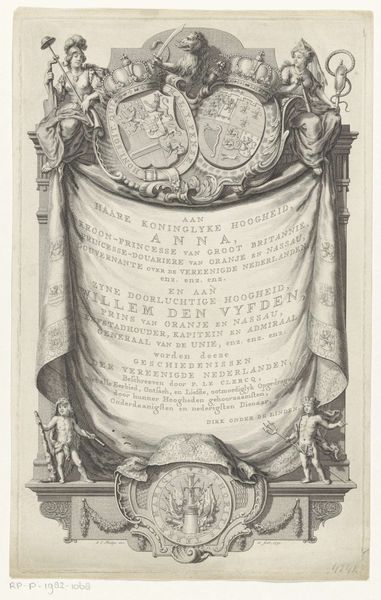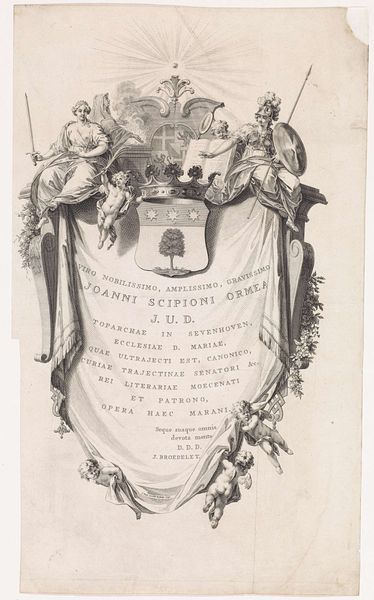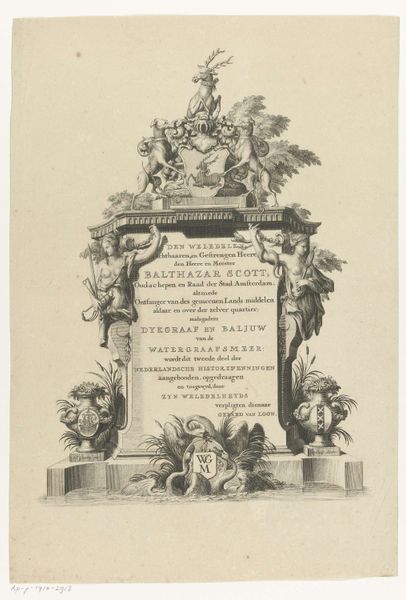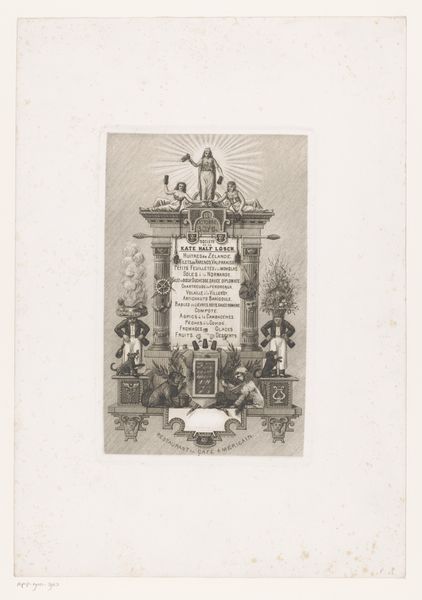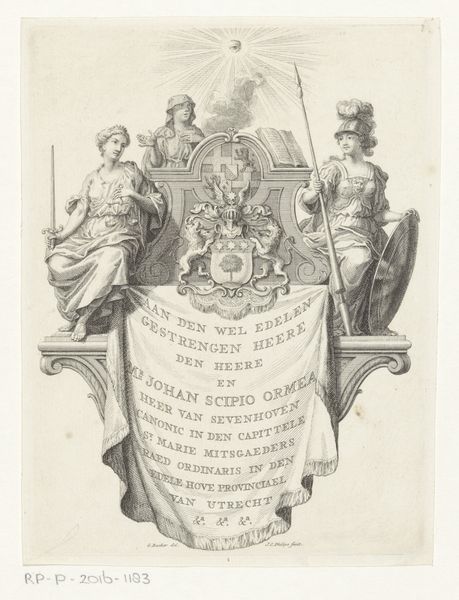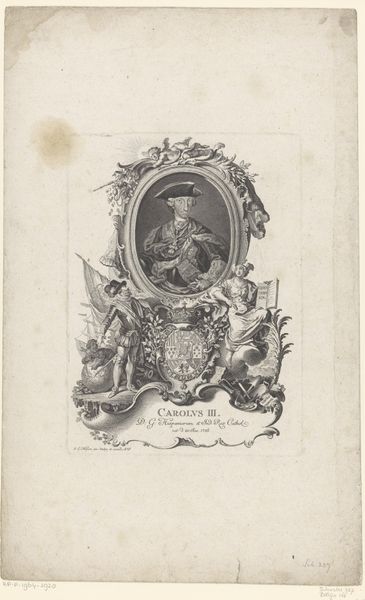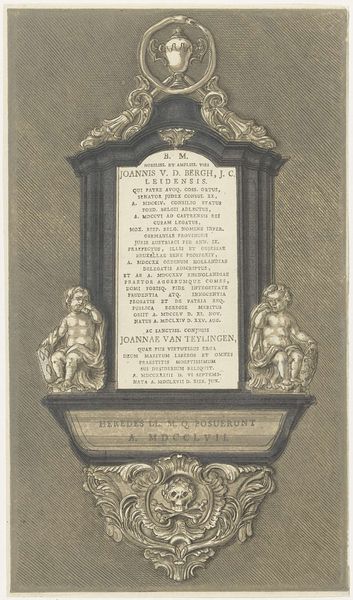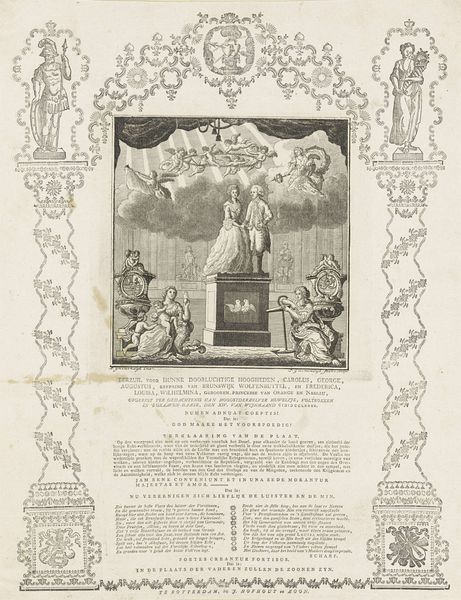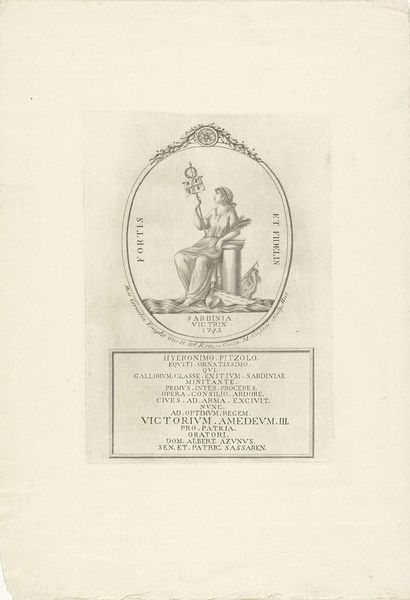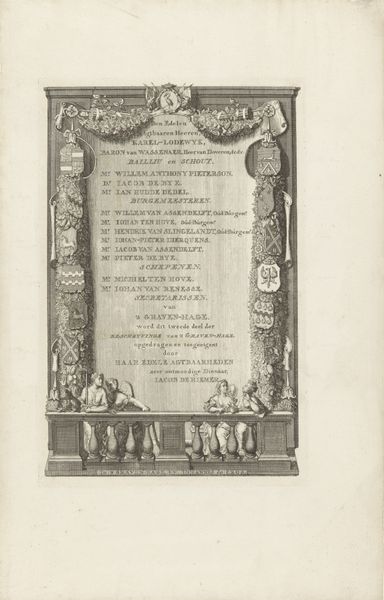
Ornamentele omlijsting bekroond met het wapenschild van Johan Hendrik van Wassenaer Obdam 1732
0:00
0:00
graphic-art, print, engraving
#
portrait
#
graphic-art
#
baroque
# print
#
old engraving style
#
history-painting
#
engraving
Dimensions: height 454 mm, width 304 mm
Copyright: Rijks Museum: Open Domain
Curator: Let’s examine this 1732 engraving by Jan Wandelaar titled "Ornamentele omlijsting bekroond met het wapenschild van Johan Hendrik van Wassenaer Obdam.” The print depicts a heraldic frame crowned with the coat of arms of Johan Hendrik van Wassenaer Obdam. Editor: My first impression is that this artwork exudes the opulence and grandeur characteristic of the Baroque era. The swirling, ornate details create a sense of controlled theatricality, yet the monochrome softens this affectation. Curator: Absolutely. Wandelaar was a master engraver, and you see the careful detail that shows the labor put in by all involved with the production of the copper plate and, therefore, printing process itself. This engraving could be considered one of several, almost standardized ways to reproduce and disseminate symbolic aristocratic displays—a method tied into specific labor practices of printmaking workshops. Editor: And it's crucial to consider the social context that heraldry operated in during the Dutch Golden Age. Wassenaer Obdam held significant political and social power; notice how the text beneath the crest lists all of his titles! This portrait serves as a proclamation and an attempt to reify social heirarchies and dynastic legitimacy during a time of rapid change in social mobilities, and emergent nationalisms. Curator: True, these images weren't merely aesthetic objects but actively reinforced societal roles and the supposed ‘natural’ authority vested in those families. Think of the cost involved and how access to these kind of representations also reproduced and affirmed societal relations. Editor: Indeed. The abundance of detail, from the allegorical figures to the meticulously rendered text, reflects the value placed on craftsmanship but also on creating enduring propaganda about power and identity through these very images. We should not forget that images can operate as statements or political tools for some—here that means affluent families. Curator: Thinking about it, I see now how it blurs the lines between graphic design, heraldry, and portraiture and reminds us how artisans in the 18th century often had fluid roles across these disciplines and operated to the whims of the elites that held access to these tools. Editor: Ultimately, Wandelaar's print offers insight into not only the aesthetics of the era but also into how identity and social status were actively shaped, broadcast, and consumed through visual media in Dutch society. It reveals a society wrestling with shifting power dynamics but deeply invested in solidifying class through the materiality of images.
Comments
No comments
Be the first to comment and join the conversation on the ultimate creative platform.
